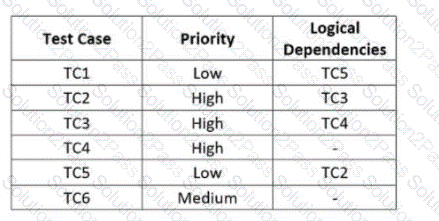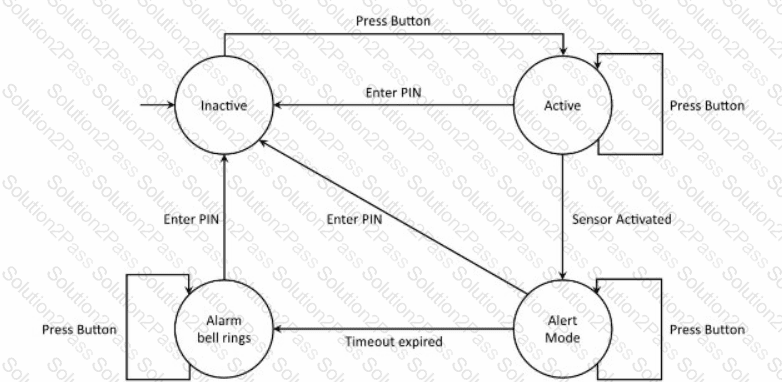CTFL_Syll_4.0 iSQI ISTQB Certified Tester Foundation Level (CTFL) v4.0 Free Practice Exam Questions (2025 Updated)
Prepare effectively for your iSQI CTFL_Syll_4.0 ISTQB Certified Tester Foundation Level (CTFL) v4.0 certification with our extensive collection of free, high-quality practice questions. Each question is designed to mirror the actual exam format and objectives, complete with comprehensive answers and detailed explanations. Our materials are regularly updated for 2025, ensuring you have the most current resources to build confidence and succeed on your first attempt.
The four test levels used in ISTQB syllabus are:
1. Component (unit) testing
2. Integration testing
3. System testing
4. Acceptance testing
An organization wants to do away with integration testing but otherwise follow V-model. Which of the following statements is correct?
A software development company invests heavily in tools to support the entire software development lifecycle, including testing. They have a tool that allows automated creation and installation of builds and subsequent execution of various types of automated tests. Which ONE of the following is a CORRECT statement about this type of test tool?
Which of the following statements about static testing and dynamic testing is true?
An application is subjected to a constant load for an extended period of time as part of a performance test. While running this test, the response time of the application steadily slows down, which results in a requirement not being met. This slowdown is caused by a memory leak where the application code does not properly release some of the dynamically allocated memory when it is no longer needed.
Which of the following statements is true?
Shripriya is defining the guidelines for the review process implementation in her company. Which of the following statements is LEAST likely to have been recommended by her?
Which of the following statements about the testing quadrants is true?
Which of the following statements about statement coverage is true?
Which ONE of the following statements does NOT describe how testing contributes to higher quality?
Which ONE of the following statements about the objectives of confirmation and regression testing is the BEST?
Who of the following has the best knowledge to decide what tests in a test project should be automated?
Which of the following is a typical potential risk of using test automation tools?
A typical test objective is to:
Which ONE of the following options explains a benefit of independent testing the BEST?
For each of the test cases to be executed, the following table specifies the priority order and dependencies on other test cases

Which of the following test execution schedules is compatible with the logical dependencies and allows executing the test cases in priority order?
Which of the following statements about checklist-based testing is true?
Scenario 1 “Happy Tomatoes” (used for questions 20-22):
An intelligent application for agricultural use incorporates temperature sensors located at different points of an enclosure. The sensors measure and record the temperature at regular intervals and extract the statistical values for these measurements. These values include the average daily temperature.
A new variety of tomatoes is currently being grown and the“World Organization for Happy Tomatoes”has established temperature ranges related to vegetative development.
When the system establishes that the average temperature is within a specific range, it emits a value that will be used to monitor and control the crop.

Using theequivalence partitioningtechnique, identify the set of input values that provides the HIGHEST coverage.
An anti-intrusion system is battery powered and is activated by pressing the only available button. To deactivate the system, the operator must enter a PIN code. The system will stay in alert mode within a configurable timeout and an alarm bell will ring if the system is not deactivated before the timeout expires. The following state transition diagram describes the behavior of the system:

What is the minimum number of test cases needed to cover every unique sequence of exactly 4 states/3 transitions starting and ending in the “Inactive” state? (note that “Inactive” is not a final state in the diagram)
Which of the following statements about static testing and dynamic testing is true?
As a tester, as part of a V-model project, you are currently executing some tests aimed at verifying if a mobile app asks the user to grant the proper access permissions during the installation process and after the installation process. The requirements specification states that in both cases the app shall ask theuser to grant access permissions only to the camera and photos stored on the device. However, you observe that the app also asks the user to grant access permission to all contacts on the device. Consider the following items:
[I]. Test environment
[II]. Expected result
[III]. Actual result
[IV]. Test level
[V]. Root cause
Based on only the given information, which of the items listed above, are you able to correctly specify in a defect report?
Match the Work Product with the category it belongs to:
Work Product:
1.Risk register
2.Risk information
3.Test cases
4.Test conditions
Category of work products:
